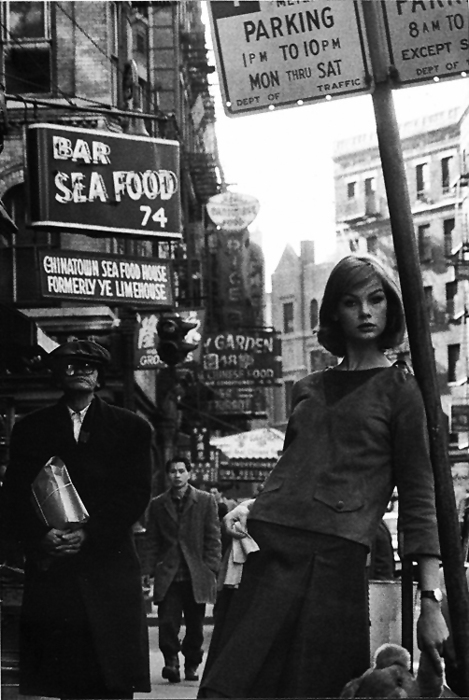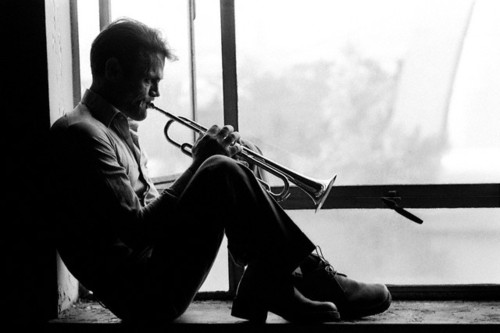Okay! so now that you know your size, what you need, and everything else we talked about yesterday, we’re finally ready to hit the shops. But don’t run out the door just yet. You can still go very wrong, very quickly if you’re not careful.
The goal here is to go for classic style. We could drink Pikesville manhattans all night and try to talk about what classic style means, but a picture is worth a thousand words. We suggest you stop taking Mad Men as your primary frame of reference, and once again strongly urge you all to check out the impossible cool.
When walking into a thrift shop, there are three ways you can go. One of them is to make a beeline for the racks of your sex and size, which is highly recommended. The goal here is efficiency, and since you already know what you’re looking for, why not go find it?
You can also head toward the “boutique” section that some stores feature near the front. These sections are typically made up of designer clothes in good condition, which are priced higher than the rest of the stock (though sometimes still a bargain). Here’s a dirty little secret though… what ends up in the boutique section is mostly arbitrary. It’s all according to the tastes and knowledge of hourly thrift store employees, who aren’t exactly fashionistas themselves. You’ll see a lot of labels you recognize, but big name designers are sometimes also fuck-ups. There’s really no difference in quality between the boutique rack and the general stock.
You can also stray into the sections that contain furniture, housewares, books and records, etc. Don’t do this! You’re here to shop for clothes today. Come back another time for all the other stuff. It’s entirely possible you’ll piss away an hour combing through Perry Como records while someone else walks away with that Fred Perry cardigan that would have looked better on you.
Now let’s get down to the straight dope. You’re standing in front of the rack and looking at a row of about 30 white shirts. How the hell do you know which one to buy? Aren’t they all the same? No. On with the tips:
>>> Fit. We know we already said that you have to know your size and try everything on, but you’re not just seeing if you can get it on, you want it to fit perfectly. Not all clothes are cut to what the tag says, and not all people fit patterns. There are plenty of articles online describing how things should fit, but basically if you’re trying it on and think it’s imperfect, it is. Sleeve length, neckroom, waist, shoulders; it’s hard to get every measurement to fall into place. It takes a lot of patience to find a piece that fits perfectly, but once you do you’ll find yourself reaching for it often, and thinking everything else in your closet doesn’t quite fit correctly.
>>> Material. Natural. No polyester. No rayon. No bullshit. Do you want to look like a cheap set of K-mart draperies, or like this? You should be looking for cotton and wool primarily, and the best quality of it you can find. These clothes will last you a lifetime. How do you think that herringbone jacket ended up here? It’s very possible that it out-lived it’s owner.
>>>Damage. Don’t buy damaged clothing. Ever. Don’t. Don’t try to convince yourself that that stain is too small to notice or that that hole will be hidden by your outerwear. It won’t, and you’ll look ridiculous. The only exception to this is damage that you are absolutely certain you can fix yourself. A missing button isn’t a problem. An off-the-seam tear is.
>>> Alteration. Going hand in hand with fit and damage is alteration. If you can alter your own clothes you’re way ahead of the game. The Chop has successfully altered jacket sleeves and added custom shirt buttons, but we’d fear to try anything more advanced. If you find that perfect outfit that doesn’t quite fit, you can have it altered (also altering the total price) but it’s important to understand what a tailor (read: dry-cleaner) can and can’t do.
>>> Look for tags and labels. Not that you should shop on tags and labels exclusively, but they can tell you a lot about a garment’s history. You’d be surprised how much never-worn clothing hits thrift stores with store tags still on it. Not that store tags make one garment inherently better than another, but they are nice to have. Labels are important to watch also. Most stores (Target, Macy’s, etc) have their own in-house brands. Tons of this shite ends up in thrift stores, and while it’s not all bad, it’s important to know that “Faded Glory” means you’re holding a pair of Wal-Mart jeans. Without resorting to being a label-whore, there’s no denying that big-name fashion houses do hire the best designers in the world, and make clothes that aren’t meant to be disposable.
>>> Shoes and accessories. You need to be very careful about walking a mile in another man’s shoes. You should never look to find boots, casual shoes, or athletic shoes used. You might, however, find a good pair of occasional shoes. Women have it much better than men in this respect, but even the men can find a good pair of brogues or something if you look long enough. The same rules as clothing apply, and don’t forget to look around at accessories. We got our Christian Dior bi-fold wallet at an area Goodwill, and get complimented on it all the time.
>>> Finally, take chances, but manage risks. The best part of shopping in a thrift store is that stuff is cheap. Buying white pants this Spring doesn’t have to mean pissing away half a day’s pay. If you get them home and realize that they actually don’t work on you, you can donate them right back. Always think about the places and events to which you could wear something, and the clothes you can match it to. Buy something you might not normally, but always, always, for Christ’s sake always resist the temptation to buy anything ironic.

